NEW GAME, NEW RULES: THE CONTEMPORARY BAR OWNER’S PLAYBOOK – According to Christina Veira & Evelyn Chick
Canada’s bar and beverage industry has forked. Arguably more than any other hospitality format, bars had to reinvent themselves multiple times throughout the pandemic. The need to eat is pandemic proof, but bars are social-first venues, and social was against the rules for a long time. When the doors finally reopened, bar owners found that the needs of their guests had permanently changed. Again.
We met with bar personalities, owners and entrepreneurs Christina Veira and Evelyn Chick to explore the midspace the industry finds itself in because, as celebrated Millennial innovators, they have a foot in both its past and its future. We discuss the top things bar operators should be taking a close look at, and how the industry can reconnect with legacy learnings that matter while charting a new path.

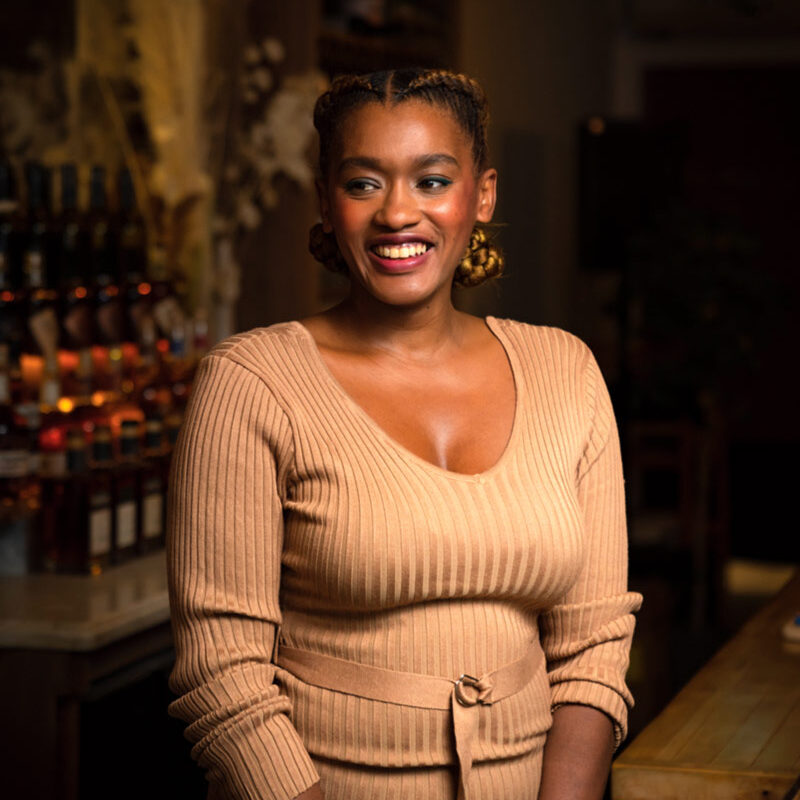
In 2015, Evelyn Chick had recently moved to Toronto and, having just won a global bar competition, was killing it as bar manager at the Harbord Room. Around the same time, Christina Veira had noticed a sea change in the bar world, led by the renaissance and evolution of mixology as an art form. “I knew how to make cocktails, but this whole new area of growth had kind of passed me by as a bar employee,” she recalls. “I really wanted to work somewhere I could hone my skills and be held to a higher standard of cocktail creation. That’s when I reached out to Evelyn.”
Since that first connection, the duo has organized and co-produced some of Canada’s top bar industry events including Speed Rack, an all-female speed bartending competition for charity, and have presided over the RC Show Bar and Beverage stage as Bar and Beverage Ambassadors curating both the stage and the supercharged Beyond The Rail Cocktail competition. “Initially, it was not the size that it is now,” Evelyn laughs. “We had a cute little bar stage with a few seminars and some tastings on the side. Since then, it just grew and grew and grew—now it’s a monster.”
The “Christina & Evelyn” co-brand is a by-product of their collaborations over the years, but it is not an official business alliance. “It just kind of grew that way,” Evelyn recalls. “We’ve had many “travelling partnership” events where being a dual entity helps with bartender education. We’re not formal partners in any way, but we look toward the same goals. We want the industry to grow. We want to educate people to help them grow and we have the resources and the capabilities to support them.” Christina agrees, “Outside of the professional work we do together, we are best friends. Sometimes it might look like we’re working on things together, but we’re just working in the same room on very different things. What we do is pretty different, but I can see that, from an outside perspective, there are still a lot of similarities.”
Some of the top hospitality companies have absorbed what other industries have done better; however, many more have attended a seminar that points our the a diversity of people leads to diversity of thought, but haven’t implement that at higher levels.
– Christina Viera
Their friendship has evolved alongside their co-productions, in part because they have achieved similar milestones and earned accolades in relative lockstep, a phenomenon Christina attributes to their shared profession and open exchange of ideas. These ideas have added range and reach to their careers, which have spanned (and continue to include) everything from traditional bartending, bar management, event conception, planning and design, competition, retail and ownership. They’ve both followed—and sometimes led—the arc of the industry as it curved away from hustle toward a more intentional development and delivery of the bar experience and design, programming and menu development, which has earned them an omniscient view of the industry. And, while they see a lot of the same opportunities listed in trend reports, they also see patterns and systems that obscure and sometimes even block the path to success.
Prior to the pandemic, Christina had successfully transformed multiple creative side hustles into full-time, freelance work, taking on projects in education, consulting and working with experiential marketing companies. But when bars shuttered and events were suspended, these opportunities disappeared. “So much of what I did relied on travel and people being together,” she explains. “I had to decide if I was going to wait around for the industry to bounce back and someone like me could get back to full-time freelance work or if I needed to go back to a bricks-and-mortar role.” The opportunity to take on Bar Mordecai, which Christina co-owns with Josh LeBlanc and Emily Blake, presented itself in the summer of 2020, which was the best of both worlds. “I could take on the bar in a bricks-and-mortar venue using what I had learned and done out on my own, but as a self-reliant business owner.”
Evelyn’s endeavours have a similarly large wingspan, but she credits a large part of her success to her natural business sense and upbringing. Her father worked in banking and her mother was “super corporate”. From her childhood in Hong Kong, the importance of being able to take care of yourself was instilled in her. Finding her way into the industry after studies in the Arts—a financial decision she thought would be short-lived—Evelyn took on a variety of bar roles, working on the full build out for Pretty Ugly, and eventually became beverage director at the Donnelly Group (now Freehouse Collective). Like so many in the sector, the pandemic would push her onto a different path. “When everyone was laid off, I repositioned myself and my own brand. I felt that I had enough knowledge on both the operations and creative side as well with a different perspective to offer the industry, so I built Evelyn Chick Projects as a bar consultancy and hub. I found it allowed me to do different things and think well outside the box, like doing cocktail kits during the pandemic. Eventually, it got big enough that I needed an event space—which had never been part of the plan, but it was the right opportunity at the right time, so I did it. My entrepreneurial sense was kickstarted by not knowing what the future would hold, and leaning into what I had learned and recognizing that that holds value. I was spiraling out of control and then suddenly, I landed on my feet as a multi-venue owner.”
>> 1. Lean in to positive social disruption.
Viewing the industry through a multi-faceted lens, Christina and Evelyn point out that the biggest hurdle for new bar owners and entrepreneurs will be seeing into a future that feels more like fortune telling than forecasting, and experienced operators still raw from endless pandemic pivots are realizing the success formulae—or “the rules”— for the industry have been replaced with a new, ad hoc playbook. “When we were bartenders coming up, we were looking at success stories and owners’ blueprints, models and three, five and ten-year plans,” Evelyn notes. “Now, everything has changed. Learning how to navigate ownership and partnerships in this new climate is crucial. These are some of the ideas we’re talking about at RC Show.”
This period of sustained disruption will undoubtedly continue to favour agile and creative entrepreneurs over more traditional business styles. While this is tough, there is an underlying positive. It’s not just “pent-up demand”, but a new willingness to try something new, engage differently and expand the concept of community. As consumers rethink the relationships they have, bars and restaurants may be advantageously positioned to service new consumer demographics, desires and need states, with an unmet desire for “community” and “belonging” at the top of the heap. “Some of the top hospitality companies have absorbed what other industries have done better,” Christina acknowledges. “However, many more have attended a seminar that points out that a diversity of people leads to diversity of thought, but haven’t implemented that at higher levels. They’re not comfortable knowing what it’s like to truly disrupt the models they use, and they’re not engaging with people on the ground. Evelyn and I do not own hundred-million-dollar hospitality companies, but what I do know is that with the diversity of our work experiences and the connections we’ve made, if we were in different bodies, the value of our work would be drastically higher. The good news is that more companies are starting to notice that the people who are economically important to them are more similar to us in demographic than to the people in charge.”
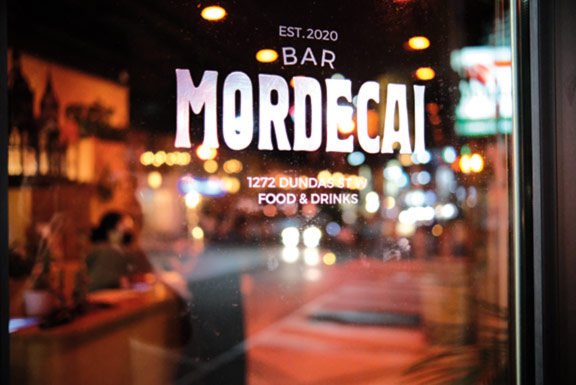
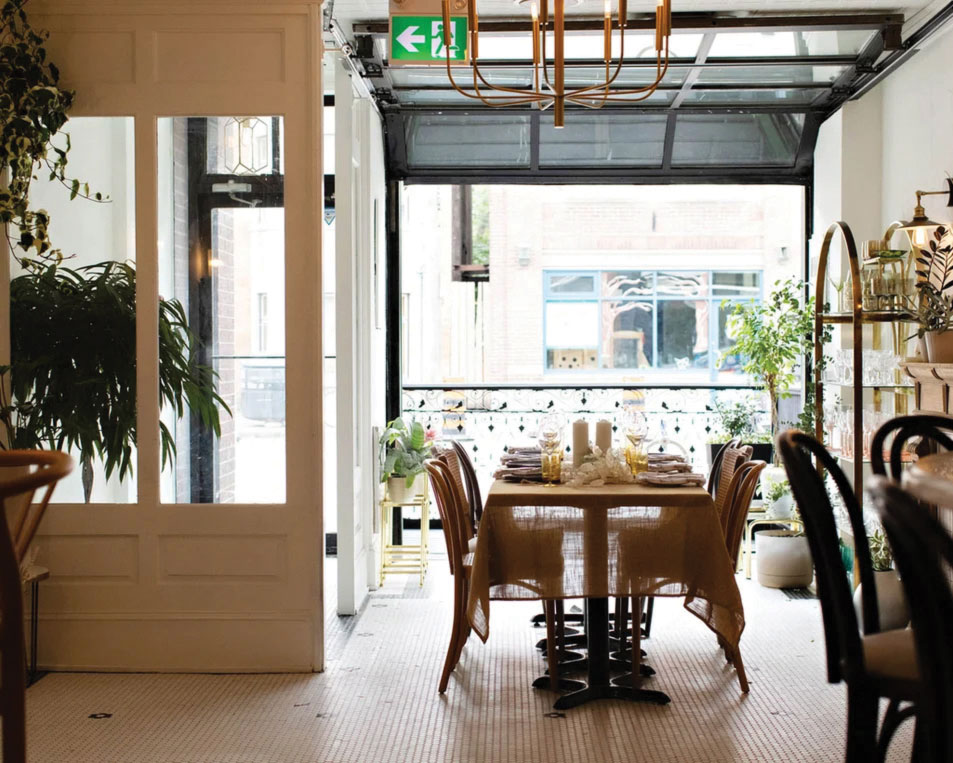

As a Black woman working in the hospitality space, Christina notes that Black entrepreneurial success stories are commonly shared because of how—and to whom—opportunities are distributed within the industry. “Not only in hospitality, but especially in hospitality, we don’t see the same styles of opportunity given to people of colour and especially women of colour. We tend to see more “entrepreneurial” success stories because people hit a wall or they see their success as something they have to self-create. I became more entrepreneurial than I necessarily wanted to, because I found it harder to grow in traditional or corporate environments. It was a way to be able to do what I wanted to do and showcase my abilities when I wasn’t getting some of the same opportunities as others.”
The need for bars and restaurants to change how they engage with talent and their clientele is a demographically-driven priority. To be successful, businesses need to learn to welcome guests from increasingly diverse age, ethnic and cultural groups. To do that, they need to realize that making space for leadership and perspective from representative talent isn’t just a line in a community social responsibility report. As neighbourhood meeting places, bars and restaurants can’t fake it until they make it—they’re the heart of hospitality. “Operators need to demonstrate greater understanding of the people who come in—what they might find curious, what technologies enhance their experience and how to deliver a real, inclusive experience,” Christina says. “For example, are you only showing Asian hands during Lunar New Year? Or Black customers during Black History Month? Or posting feminized hands holding a drink on your Instagram? What do people look like in your ads? On social media, or TikTok, it could instead be not having a strategy at all. Our staff understand that people who come in and have a good experience will essentially create advertisements for you, but you need to know what people want from your place to be able to do that.”
>> 2. Don’t pay for influence, inspire co-creators.
Christina notes that Bar Mordecai has grown its business using authentic, earned posts from guests. “Based on the way TikTok works, people don’t need to have a lot of followers. They can just hit the algorithm in a certain way. A person might only have a hundred followers on TikTok, but because of the way the algorithm works and how it geolocates, those videos can actually bring in hundreds of people. Engaging naturally with customers and allowing them to add to your brand story can bring in a lot more business. You don’t have to pay for five influencers with a lot of followers. It could be as simple as naming one of your happy hour cocktails using the most current slang. It works and people love it. Our happy hour gets featured all the time.”
>> 3. Foster a sense of belonging.
When people emerged from lockdown, they wanted more from many businesses. For bars, this has manifested in a heightened consumer appetite for business that deliver superior human interaction and connection and a sense of belonging. This new demand is reshaping bar offerings and design, ushering in a renaissance of the old club or public house-style spaces. Bars are no longer just a place to get a drink, they’re a community social space with a new ability to make money across multiple programs.
Fluidity isn’t something people talk about in business. People may have a vision and feel they need to have things roll out a certain way, but the pandemic changes that forever.
– Evelyn Chick
Culture plays an enhanced role in the new landscape and desire to belong, and great bars deliver culture by creating a harmonized, well-programmed experience that’s shared with its customers. The food, bar and experiential menu define the boundaries and guests are welcome to participate within them. “Bars are inherently experiential,” says Christina. “That’s why programming is so important. Your vibe, your lighting, your level of intimacy—that’s all programming. Bar Mordecai is really big, so I try and do a lot of different levels of programming, like karaoke. You don’t have to drink; you can come for just an activity at the minimum spend.” Evelyn agrees. “We’re exiting the realm of thinking in terms of “drinkers” and “non-drinkers”—everyone is a guest. It’s about rethinking profitability. We’re moving past the mentality that non-drinkers are just taking up a seat. Whether it’s a karaoke room, a special DJ or just curating a really special social space, bars are no longer transactional. It’s not about how we get the most money from a seat. It’s total profitability—adding activities, no/lo options and other programming aspects to keep people in seats and expand your customer engagement and reach—that’s the point.”
>> 4. Build fluidity and connection points into your bar experience.
Creating resonant community connections through features and subtle design touches from menu item names and custom events to targeted bar zones is the essence to placemaking and plays an important role in customer engagement and comfort. Adding design features that encourage photography or video is a smart choice, but also pay attention to other often-photographed areas of your bar—it may surprise you to learn what others like about your space. “It’s almost never what you expect when you design it,” Christina points out. “It’s actually humbling. Both of our spaces were designed by us and have our aesthetic, but there are always other things that people focus on. You lean into that because it creates a visual story that draws people in. Word of mouth is a real thing, but it’s not just through spoken language anymore.”
Evelyn and Christina note that in a post-blueprint business world, success relies on inviting the consumer in to engage and co-craft bar spaces over time. Both acknowledge that their spaces have evolved away from their original business plans over time and that this is essential to guest belonging and loyalty. The pivot has become a permanent, element of the bar business, though now it’s less reactionary and more fluid. “Fluidity isn’t something people talk about in business,” Evelyn says. “People may have a vision and feel they need to have things roll out a certain way, but the pandemic changed that forever.”
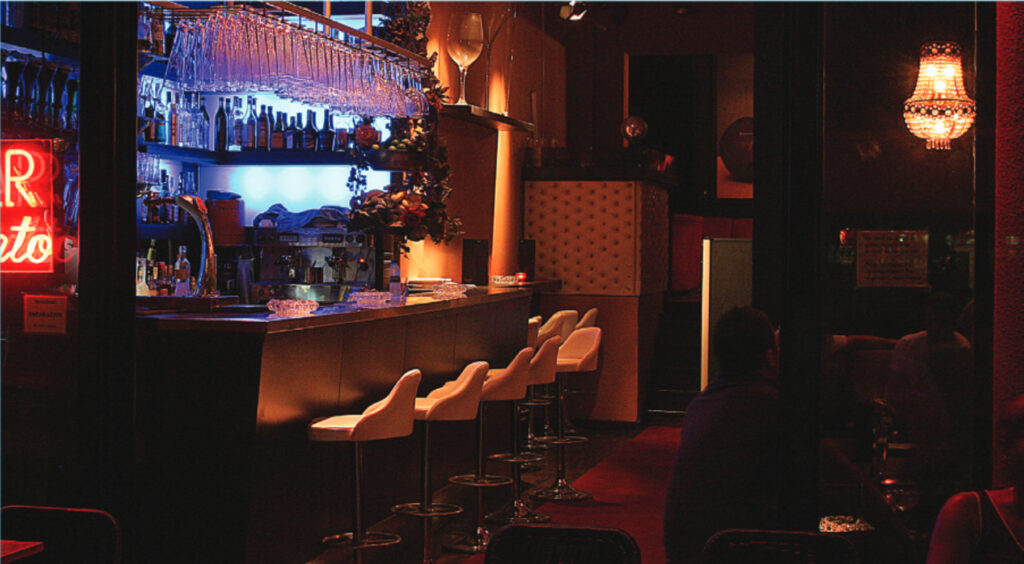
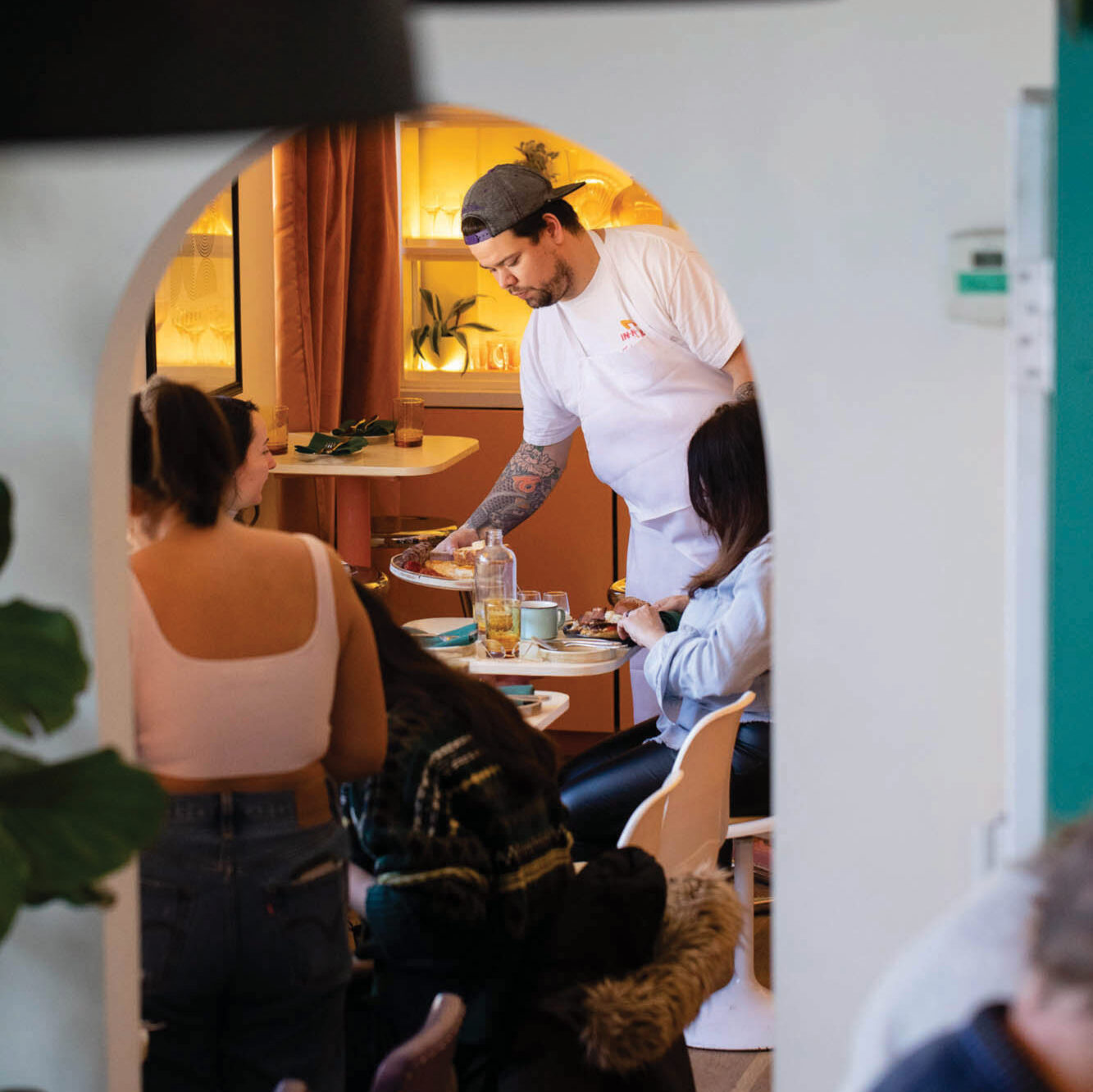
>> 5. Make communication a core business competency.
If inviting guests into the tent is about building loyalty, inviting staff in is about building the stability and consistency an operation needs to survive. Independent bars in high-competition locations rely on staff to not only serve their guests, but also represent the philosophy or vibe of the operation. Younger consumers and employees are prioritizing differently, often considering their choice to visit or work at a business as an investment in the business or an implied endorsement of its practices and values. This shift has put greater emphasis than ever on communication and specifically around setting expectations with guests.
“We are solidly Millennials,” says Christina. “We have a lot of Gen Z staff, and there’s a significant difference between how we were trained and the expectations staff have—or the fact staff can have expectations. Or what guests expect. I’ve never seen businesses (or myself) put in so much effort to setting and conveying guest expectations—from rules, seating times, order modifications—we spend a lot of time communicating to our staff how they should communicate expectations to our guests in a way that’s firm, but hospitable. This can be difficult in a society where rules are sometimes perceived as control. I do a lot of training with staff on how to communicate that it’s not about saying “no”, it’s about making sure everybody has a good time.”.

>> 6. Embrace the trends that make sense for your business.
When we talk about bar trends, Evelyn, who has been advocating for the no/lo movement for years, laughs out loud. She believes trends like the no/lo movement not only accommodate the needs of a growing guest cohort, but are also reshaping the scope of experience bars can offer all visitors. “Bars are now offering an evolving range of entertainment,” she says. “There are a lot of hybrid and innovative models that have come up that will feed this “movement”. I’ve seen a move toward no/lo options, but do I think drinking is going to go away? No.”
Christina notes that cultural and lifestyle awareness need greater consideration in the hospitality space. “I come from a family that doesn’t drink alcohol, so I’ve never thought that if people don’t drink, they don’t belong in the space. There are many cultures and lifestyles that do not centre drinking in their ability to access social spaces. You can see it in how some people are still framing no/lo—that you can only have fun if you go out drinking—it’s very North American. Many cultures don’t think that way. We put a no or lo-alcohol cocktail on our happy hour menu, and these options often get cycled throughout a guest’s night. A Campari and soda is low alcohol, until you drink 12 of them. We see more people drinking a cocktail and then having a non-alcoholic beer, like Corona Sunbrew, because it tastes and looks similar to the regular brew. Being able to have something that doesn’t look comical and tastes similar appeals to people and means they don’t have to explain their actions. That can matter to people.”
Evelyn further qualifies that although no/lo plays an important role in bar culture, both in terms of provision and quality of experience, it doesn’t mean operators should be embarking on a wholesale menu conversion. “It really goes back to building spaces of community and socialization. “Something as basic as the wording on the menu listing and how you train your staff to talk about it is huge. It’s not realistic to expect bars to stack their menus with no/lo options, but in terms of curating your space to make sure every single person is welcome and cared for, this service is now an integral, normalized part of service. No/lo options need to be integrated into day-to-day service to have a successful bar program.”
The winning approach is to develop a bar menu that reflects the bar concept, with options available to suit different guest needs. If you’re a cocktail-focused bar, you don’t need to offer a robust selection of beer or wine options—just one or two complementary beers or wines will suffice. “We do not sell a lot of beer,” says Christina. “We’ve whittled the menu down so that we have interesting options we always carry, but Bar Mordecai doesn’t need 20 beers. We have a tight, non-alc cocktail menu with a few cocktail options, a house-made soda and some non-alc beers, but we’re a cocktail bar and that’s what the majority of people will order.”
>> 7. Build a healthy bar culture.
Evelyn and Christina’s Tuesday Takeover at RC Show is centred around the ways owners can take care of themselves and their staff to help them serve their customers. The day’s lineup focuses on strategies to create better work environments, improve personal and employee mental health, decrease stress and increase sustainable profitability.
“Last summer, we saw a lot of people exit the industry,” says Evelyn. “There was a constant conversation about the labour shortage and the sense that owners couldn’t find or hold on to staff. The biggest thing owners are looking for in the uncertain and chaotic future is an upward trajectory on longevity. This is perceived as a transient industry where people can come in and make money to continue their education or work toward other goals. We need to think about the industry as a professional space where you can expand and grow. With experiential design, social media content marketing, activations and employee health support, there’s a lot of new movement in the industry and room to invest in your staff. Building a healthier bar culture is not only going to keep people in your space, it’s going to help build a better industry narrative.”
I come from a family that doesn’t drink alcohol, so I’ve never thought that if people don’t drink, they don’t belong in the space.
– Christina Viera
Evelyn acknowledges that the tight labour market and growing industry attrition has changed the rules of attraction and retention. “There’s a growing realization that a person will probably perform better in the space if their needs are accommodated. The industry is waking up. Younger employees have seen others working less hard for a greater return on investment, and they want to see that in this industry. We need to help operators navigate through this integral period of growth for their staff and the industry by giving them the right tools.”
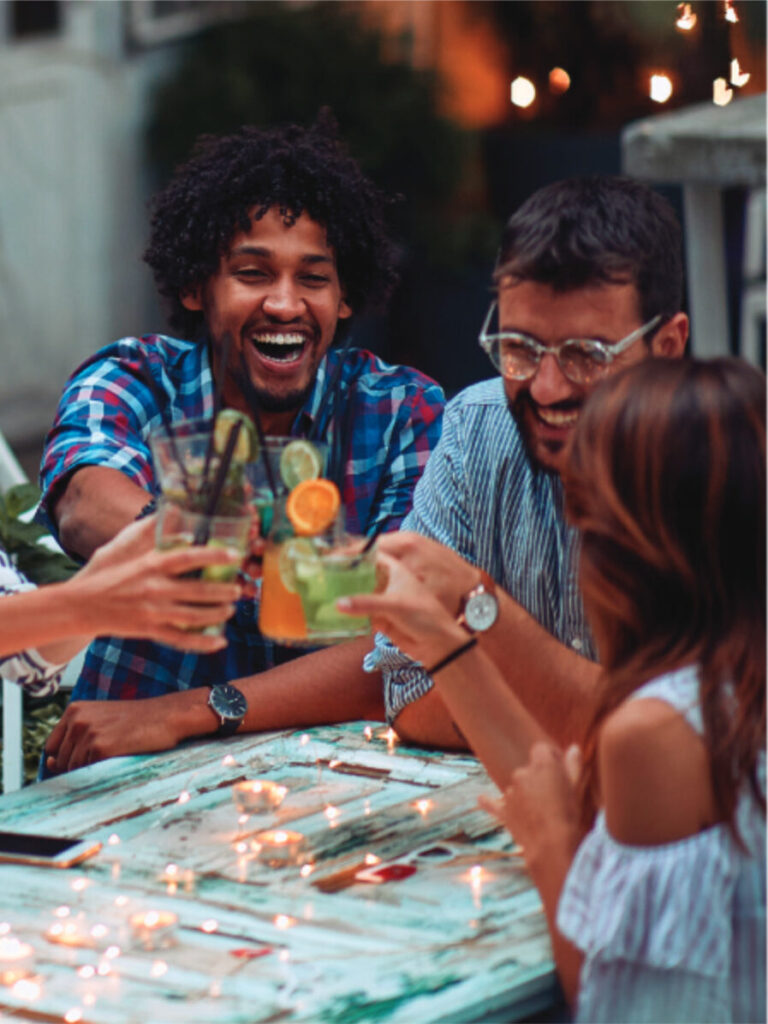
Many young people entering the industry did not work during their teen years, so their manager may be their first authority figure who is not a parent, coach or teacher, Christina points out. Managers need to take the time to communicate clear expectations with these employees and explain any consequences of their preferences or boundaries. “If an employee doesn’t want to work late hours, they need to be told they won’t earn as much from tips because our volumes increase after 9 or 10:00 p.m. If an employee needs to take a mental health day, that’s completely okay, but they need to understand that they are responsible for making that call. Clear expectations and accountabilities need to be laid out. Those conversations help keep the individual employee and the entire workspace healthy.”
“It’s all about managing accountabilities,” Evelyn adds. “Previously, the employer called all the shots and made all the rules. Some owners may feel that roles are reversed and staff have all the power, but that’s not true. It’s about the relationship you establish with your staff. From independents to large corporations, conversations with employees are happening to establish expectations, and understand their needs. Bar culture is shifting.”









